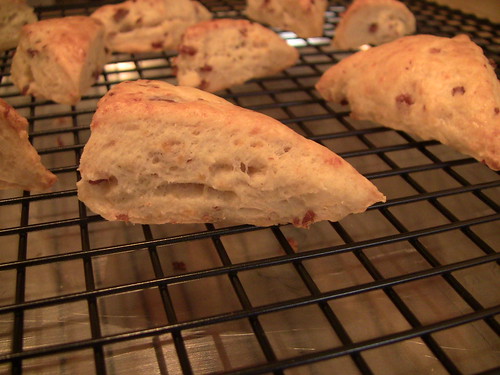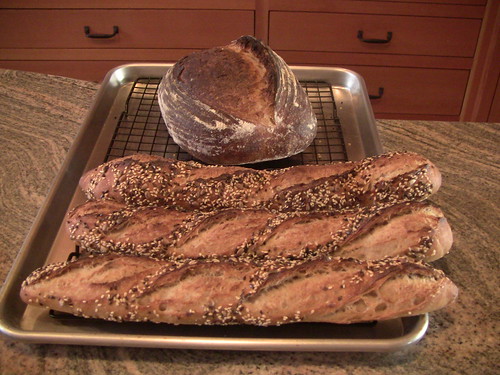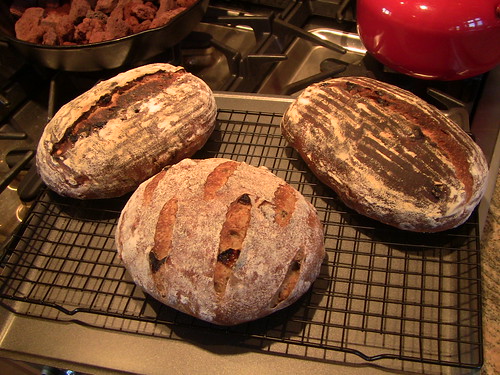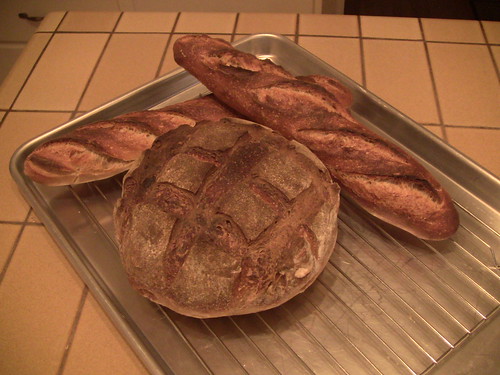GSnyde's blog
And, finally, back to the beginning
As the year ends, and I look back, I see the start of my baking experience. And it’s Pizza! Making pizza is part cooking and part baking. Pizza is a good segue, a path for a cook to start becoming a baker.
My last bake of the year was two pies: a main course pizza of sausage, fresh Mozzarella, and two sauces, and a “dessert pizza” of Bosc pear, Walnuts and Gorgonzola cheese, drizzled with a Balsamic reduction.
SFBI Walnut-Raisin Bread – Northern Version
When Brother David finished the Artisan II course at SFBI a few weeks ago, he didn’t have to plead with us to take some of the products of his craft off his hands. All of the breads were good, but two stood out—the Miche and the Walnut-Raisin Bread. I’m sure he will get around to baking the Miche at home, and I’ll try to be patient waiting for that recipe to be shared.
Looking Back and Looking Forward: With Sweetness
The Winter Solstice and the Year-End/New Year is a time for re-collecting the events of the year, and also a time for renewal and reinvention. It’s a time for tradition and a time for new things, too. A good time to look back and look forward.
Mendocino Sunrise 12-23-10
Awash in Bread? Bake Sweets!
Not a lot to report this weekend. The highlight was the Saturday morning bread handoff from David. We adopted a dozen or so wayward loaves from his SFBI adventure: a baguette, an Italian bread in baguette shape (Stirato?), an olive bread, a raisin walnut bread, a couronne, several airy decorative loaves, and--best of all--a miche. Here's the haul, minus the five loaves already in the freezer.
Poilane-Style Miche from BBA
I took a week away from baking last week. It could have been a visit to the East Coast, or a pulled muscle in my back, or a very unpleasant gut infection. In fact, it was all three. But the good news is (1) the absence of discomfort now seems like heaven, (2) I didn’t forget how to bake, and (3) I got the chance today to try the Central Milling “Organic Type 85” high-extraction flour for the first time. And I never knew what I’d been miche-ing!
Challah (Without Trainer Wheels)
Of course, different people prefer different breads. I like variety, but I am here to say that I love challah.
Being a newcomer to baking, I’ve only tried eight or ten different breads. And probably half my bakes have been some variation on Sourdough Pain de Campagne (Hamelman and dmsnyder, for instance). I’ve managed to learn “on the job” pretty quickly, thanks to lots of reading, TFL tips and occasional chats with David.




